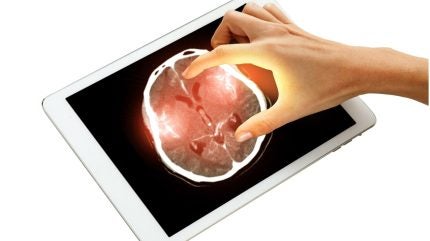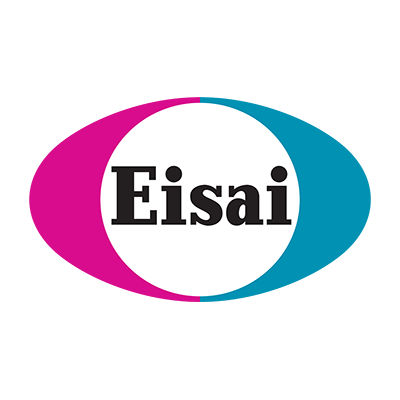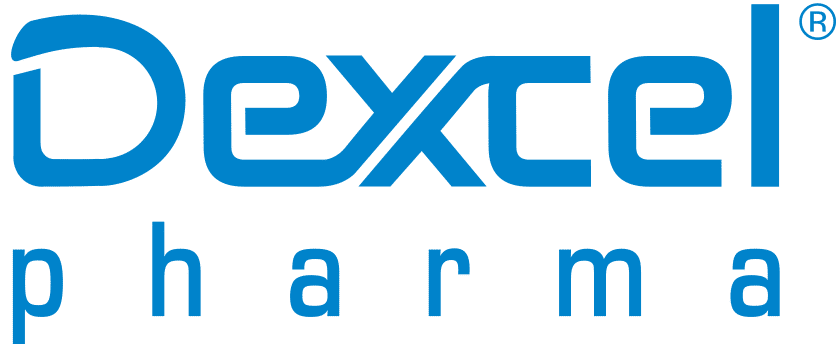Request Demo
Last update 08 May 2025
gastric ulcer benign
Last update 08 May 2025
Basic Info
Synonyms GASTRIC ULCER BENIGN, benign gastric ulcer, gastric ulcer benign |
Introduction- |
Related
7
Drugs associated with gastric ulcer benignTarget |
Mechanism ATPase inhibitors |
Active Org. |
Originator Org. |
Active Indication |
Inactive Indication |
Drug Highest PhaseApproved |
First Approval Ctry. / Loc. United States |
First Approval Date15 Jun 2004 |
Target |
Mechanism Proton pump inhibitors |
Originator Org. |
Active Indication |
Inactive Indication |
Drug Highest PhaseApproved |
First Approval Ctry. / Loc. Japan |
First Approval Date14 Oct 1997 |
Target |
Mechanism Proton pump inhibitors |
Active Org. |
Originator Org. |
Inactive Indication |
Drug Highest PhaseApproved |
First Approval Ctry. / Loc. Japan |
First Approval Date02 Oct 1992 |
27
Clinical Trials associated with gastric ulcer benignCTR20241836
奥美拉唑碳酸氢钠干混悬剂的人体生物等效性试验
[Translation] Bioequivalence study of omeprazole sodium bicarbonate dry suspension in healthy volunteers
考察空腹条件下,健康受试者单次口服由安徽四环科宝制药有限公司提供的奥美拉唑碳酸氢钠干混悬剂(受试制剂T,规格:每袋含奥美拉唑40mg和碳酸氢钠1680mg)或由Salix Pharmaceuticals Inc持证的奥美拉唑碳酸氢钠干混悬剂(参比制剂R,商品名:ZEGERID®,规格:每袋含奥美拉唑40mg和碳酸氢钠1680mg)的药动学特征,评价两制剂间的生物等效性及安全性,为受试制剂的注册申请提供依据。
[Translation]
To investigate the pharmacokinetic characteristics of a single oral administration of omeprazole sodium bicarbonate dry suspension (test preparation T, specification: each bag contains 40 mg omeprazole and 1680 mg sodium bicarbonate) provided by Anhui Sihuan Kebao Pharmaceutical Co., Ltd. or omeprazole sodium bicarbonate dry suspension (reference preparation R, trade name: ZEGERID®, specification: each bag contains 40 mg omeprazole and 1680 mg sodium bicarbonate) certified by Salix Pharmaceuticals Inc. to healthy subjects under fasting conditions, evaluate the bioequivalence and safety of the two preparations, and provide a basis for the registration application of the test preparation.
Start Date21 Jun 2024 |
Sponsor / Collaborator |
CTR20231671
奥美拉唑碳酸氢钠胶囊随机、开放、单剂量、两制剂、交叉设计在中国健康受试者中的生物等效性正式试验
[Translation] A formal bioequivalence study of omeprazole sodium bicarbonate capsules in Chinese healthy subjects: a randomized, open-label, single-dose, two-formulation, crossover design
主要研究目的:以宁波美诺华天康药业有限公司的奥美拉唑碳酸氢钠胶囊为受试制剂,并以Salix Pharmaceuticals Inc的奥美拉唑碳酸氢钠胶囊为参比制剂,进行人体生物等效性评价。
[Translation]
Main research purpose: To evaluate the bioequivalence of omeprazole sodium bicarbonate capsules produced by Ningbo Minova Tiankang Pharmaceutical Co., Ltd. as the test preparation and omeprazole sodium bicarbonate capsules produced by Salix Pharmaceuticals Inc as the reference preparation in humans.
Start Date12 Jun 2023 |
Sponsor / Collaborator |
CTR20231814
随机、开放、单剂量、两制剂、两序列、两周期、自身交叉对照设计,评价中国健康受试者在空腹状态下单次口服奥美拉唑碳酸氢钠胶囊后的生物等效性正式试验
[Translation] A randomized, open-label, single-dose, two-formulation, two-sequence, two-period, self-crossover controlled study was conducted to evaluate the bioequivalence of a single oral dose of omeprazole sodium bicarbonate capsules in healthy Chinese subjects in the fasting state.
主要目的:以海南广升誉制药有限公司提供的奥美拉唑碳酸氢钠胶囊为受试制剂;并以Salix Pharmaceuticals Inc持证的奥美拉唑碳酸氢钠胶囊为参比制剂,进行人体相对生物利用度和生物等效性评价。
[Translation]
Main purpose: To evaluate the relative bioavailability and bioequivalence of omeprazole sodium bicarbonate capsules provided by Hainan Guangshengyu Pharmaceutical Co., Ltd. as the test preparation and omeprazole sodium bicarbonate capsules certified by Salix Pharmaceuticals Inc. as the reference preparation.
Start Date11 Jun 2023 |
Sponsor / Collaborator |
100 Clinical Results associated with gastric ulcer benign
Login to view more data
100 Translational Medicine associated with gastric ulcer benign
Login to view more data
0 Patents (Medical) associated with gastric ulcer benign
Login to view more data
907
Literatures (Medical) associated with gastric ulcer benign12 Mar 2025·Journal of the American Chemical Society
Efficient Metabolomics Profiling from Plasma Extracellular Vesicles Enables Accurate Diagnosis of Early Gastric Cancer
Article
Author: Wang, Duanda ; Bu, Fanqin ; Song, Yongyang ; Shen, Xinyi ; Wang, Shutao ; Min, Li ; Zhan, Haosu
01 Mar 2025·Journal of Gastrointestinal Surgery
Distinct clinical phenotypes in gastric pathologies: a cluster analysis of demographic and biomarker profiles in a diverse patient population
Article
Author: Biglari, Mohammad ; Gorjizadeh, Neda ; Bahar, Massih ; Arani, Ali Sheibani ; Yazdi, Seyed Amir Miratashi
01 Feb 2025·Gastrointestinal Endoscopy
A Rare Presentation of Esophagopericardial Fistula Arising from Benign Ulcer
Article
Author: Fallah, Marc ; Katwala, Kashyap ; Katwala, Ajay ; Lubawski, James ; Foy, Bryan
4
News (Medical) associated with gastric ulcer benign15 Nov 2024
Danziten is set to be available soon via Biologics by McKesson and Limited Specialty Distribution. Credit: Motortion Films via Shutterstock.
The US Food and Drug Administration (FDA) has approved Azurity Pharmaceuticals’ Danziten (nilotinib), the first and only nilotinib formulation that does not require mealtime restrictions, to treat chronic myeloid leukaemia (CML).
It is indicated for adults with newly diagnosed Philadelphia chromosome-positive (Ph+) CML in the chronic phase, as well as those who are resistant or intolerant to previous therapies that included imatinib.
Danziten’s reengineered formulation is said to provide equivalent efficacy to Tasigna but with enhanced bioavailability, enabling a lower dosage.
Its approval is expected to enhance patient adherence to treatment, as it eliminates the need for fasting, which has been a challenge with current therapies.
While Tasigna, the existing nilotinib treatment, has proven efficacy for Ph+ CML in chronic and acute phases, its bioavailability is affected by food intake, necessitating strict fasting to prevent cardiotoxicity.
An optimal tyrosine kinase inhibitor therapy may lead to deep molecular responses, and for some patients, even treatment-free remission, the company noted.
Azurity Pharmaceuticals CEO Richard Blackburn said: “Danziten offers a new nilotinib treatment option with the equivalent efficacy to Tasigna, but without the fasting requirements of Tasigna.
“Unlike Tasigna, the boxed warning on the Danziten label has no requirement for patients to take their medication in a fasted state, liberating CML patients from mealtime restrictions.”
Danziten is set to be shortly available via Biologics by McKesson and Limited Specialty Distribution.
In September this year, the FDA approved the company’s
Nymalize
, an oral solution provided in a 5ml prefilled ENFit syringe as an alternative for adult subarachnoid haemorrhage patients.
In 2022, it
received approval
for Konvomep, a treatment for active benign gastric ulcers and risk reduction of upper gastrointestinal bleeding in critically ill patients.

Drug Approval
04 Sep 2024
Nymalize is indicated for use in adult patients with subarachnoid haemorrhage from ruptured intracranial berry aneurysms. Credit: Radiological imaging/Shutterstock.
Azurity Pharmaceuticals’ Nymalize (nimodipine) oral solution in a 30mg/5ml prefilled ENFit syringe has received US Food and Drug Administration (FDA) approval.
The ready-to-use prefilled syringe offers an additional layer of security for both patients and healthcare professionals when administering medication.
The oral solution in the prefilled ENFit syringe offers an effective alternative for adult subarachnoid haemorrhage patients who are unable to swallow capsules.
The adoption of ENFit connectors, which are recommended by the FDA, is said to be on the rise, with around 60% of acute care facilities in the US making the switch from traditional nasogastric tubing.
Nymalize improves neurological outcomes by reducing the incidence and severity of ischemic deficits in adults with subarachnoid haemorrhage from ruptured intracranial berry aneurysms.
See Also:
RegenxBio touts positive data for rare disease drug RGX-121
Ocaliva approval in Europe withdrawn following data re-assessment
It is suitable for patients across a range of post-ictus neurological conditions, classified from Hunt and Hess Grades I to V.
The Nymalize prefilled ENFit syringes (30 mg/5 ml), along with prefilled oral syringes (30 mg/5 ml and 60 mg/10 ml) and 8 oz (237 ml) bottles will soon be available for order through pharmaceutical wholesalers.
Azurity Pharmaceuticals CEO Richard Blackburn stated: “Patients are our priority, and our purpose is to bring them new formulations and delivery systems that help them benefit from established medicines.
“Delivering Nymalize with ENFit syringes may offer patients and healthcare professionals a more secure, reliable drug administration through standardisation.”
In September 2022, the FDA granted approval for Azurity’s
Konvomep (omeprazole and sodium bicarbonate for oral suspension) to treat active benign gastric ulcers
.

Drug Approval
07 Sep 2022
MIAMI, Sept. 7, 2022 /PRNewswire/ -- Brand Institute is proud to announce its work with Azurity Pharmaceuticals (formerly CutisPharma) in developing the brand name KONVOMEP™, which was approved by the FDA on August 30, 2022.
KONVOMEP™ (omeprazole and sodium bicarbonate for oral suspension) is a medication indicated for short-term treatment (4 to 8 weeks) of active benign gastric ulcer and reduction of risk of upper gastrointestinal bleeding in critically ill adult patients. Azurity Pharmaceuticals reports that KONVOMEP is expected to become commercially available in pharmacies nationwide in Q1 of 2023.
Azurity Pharmaceuticals is a pharmaceutical company focused on developing innovative dose-forms and formulations of products to serve the needs of overlooked patients. Azurity Pharmaceuticals' products span the cardiovascular, neurology, endocrinology, gastro-intestinal, institutional, and orphan markets.
"The entire Brand Institute and Drug Safety Institute Team congratulates Azurity Pharmaceuticals on the FDA approval of KONVOMEP," said Brand Institute's Chairman and C.E.O., James L. Dettore.
About Brand Institute and our wholly owned regulatory subsidiary, Drug Safety Institute
Brand Institute is the global leader in pharmaceutical and healthcare-related name development, with a portfolio of over 4,000 marketed healthcare brand names, 1,300 USAN/INN nonproprietary names for 1,200 clients. The company partners on over 75% of pharmaceutical brand and nonproprietary name approvals globally every year with healthcare manufacturers. Drug Safety Institute is composed of former naming regulatory officials from global government health agencies, including Food and Drug Administration (FDA), European Medicines Agency (EMA), Health Canada (HC), American Medical Association (AMA), and the World Health Organization (WHO). These regulatory experts co-authored the name review guidelines while with their respective agencies, with many responsible for ultimately approving (or rejecting) brand name applications. Now working for a private company, these professionals provide Brand Institute's clients with industry-leading guidance pertaining to drug name safety (i.e., preventing medication errors), packaging, and labeling.
Contact:
James Dettore
Chairman & C.E.O.
[email protected]
SOURCE Brand Institute, Inc.
Analysis
Perform a panoramic analysis of this field.
login
or

AI Agents Built for Biopharma Breakthroughs
Accelerate discovery. Empower decisions. Transform outcomes.
Get started for free today!
Accelerate Strategic R&D decision making with Synapse, PatSnap’s AI-powered Connected Innovation Intelligence Platform Built for Life Sciences Professionals.
Start your data trial now!
Synapse data is also accessible to external entities via APIs or data packages. Empower better decisions with the latest in pharmaceutical intelligence.
Bio
Bio Sequences Search & Analysis
Sign up for free
Chemical
Chemical Structures Search & Analysis
Sign up for free




